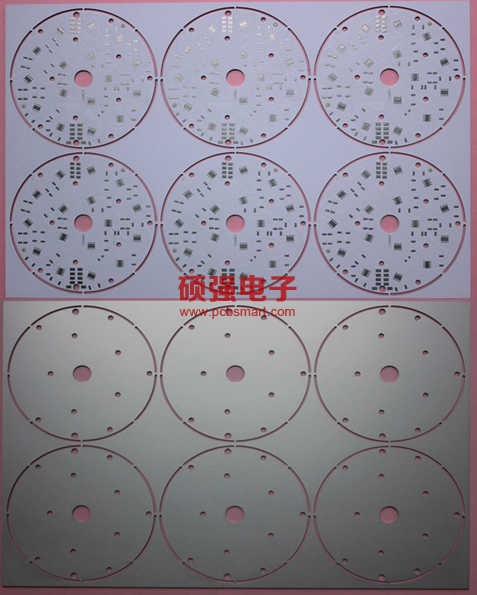More and more companies are shipping all over the world. Classification is the important step in the whole import & export process. A global standard classification system is a must.

HS Code is widely used in every international trade process. As an importer or exporter, it’s necessary to fully understand and make proper use of it.

What’s the definition of HS Code?
Let’s define HS (Harmonized System) from the authority source Wikipedia:
The Harmonized Commodity Description and Coding System, also known as the Harmonized System (HS) of tariff nomenclature is an internationally-standardized system of names and numbers to classify traded products. It came into effect in 1988 and has since been developed and maintained by the World Customs Organization (WCO) (formerly the Customs Co-operation Council), an independent intergovernmental organization based in Brussels, Belgium, with over 200 member countries.
In short, Harmonized Code is a common term in global trade language, and it’s one of the most important elements to bring standardization to international trade.
What’s the structure of HS Code?
There are ten digit numbers of a full code. To ensure harmonization, the contracting parties must employ at least 4-digit and 6-digit provisions, international rules and notes, but are free to adopt additional subcategories and notes.
For example (see more @ http://hscode.org)

Why is HS Code important?
Because it’s widely used in:
- * Customs tariffs (aka HTS, Harmonized Tariff Schedule)
- * Collection of international trade statistics
- * Rules of origin
- * Collection of internal taxes
- * Trade negotiations (e.g., the World Trade Organization schedules of tariff concessions)
- * Transport tariffs and statistics
- * Monitoring of controlled goods (e.g., wastes, narcotics, chemical weapons, ozone layer depleting substances, endangered species)
- Areas of Customs controls and procedures, including risk assessment, information technology and compliance.
The ten digit number is a must for landed cost calculation.
Is there a global HS Code?
No. You should know exactly what the specific number in your specific country. But the first 6 digit numbers are supposed the same across the whole world. Each country can modify by adding two digits or four digits as per their requirements without changing first six digits.
The code your Chinese supplier provided will be a good basis for your final decision. Because by using the Harmonized Commodity Coding and Classification System established by the World Customs Organization, each country can at least describe each item in the same way. Without a common system for classifying products, the movement of merchandise in international trade would be very slow and costly.
Before the introduction of the Harmonized System in 1988, each item had to be classified under differing tariff systems of various countries. This slowed down and complicated international trade, making it very difficult to do business in many countries. In interest of speeding up economies and simplifying the classification process, the Harmonized System is widely adopted throughout the world.
How to determine the Code of my products?
According to our practical work experience, there are many issues in classification determination.
- * Translation Problems
- * Usage Problems
- * Description Reliability
- * Inconsistent/Unreliable Item Number Logic
- * Disparities Between Customs Authorities and Suppliers/Manufacturers in Product Descriptions
So, how do you set up a best in class classification process that will be efficient, demonstrate reasonable care and ensure you are using the lowest possible duty rate?
- Break Down Universe
The first step is to break down your item universe into specific product groupings so that like parts are grouped together. This step is critical to ensure efficiency and control for maintaining the integrity of the data and the benefits are:
- * For similar items, you can maximize economies of scale to classify like parts at the same time with the same classification and support.
- * Additionally, you can ensure like parts are all classified the same (reasonable care), and there are not any inconsistencies within a part grouping.
- Research
Whether you know the product well or are just starting out, always check the rulings. Take five minutes and check to see if there has been any change in logic, new rulings, revocations, etc. Technology are constantly changing and the tariff doesn’t necessarily keep up with technology.
- Identify Product Specifications
Once you have a starting point from the rulings, you should be able to determine what types of information you need to know about your item in order to assign the best possible classification. Request product specifications, drawings, photos and spec sheet information from your China supplier.
There’s a list below which will support your classifications with how you came to your classification determination. This includes:
- * Spec sheets/drawings/photos
- * Information requests to/from engineers, scientists, chemists, etc.
- * Chapter and Section Notes that apply
- * Explanatory Notes (not legally binding)
- * Informed Compliance Publications
- * Rulings used for applying logic or binding rulings specific to your company
Conclusion
At the first time of China import, you need to pay very careful attention to the Harmonized Code, whether you do the research yourself, or seek help from your Customs broker or your freight forwarder.
Also keep in mind that what you’ve found on the internet is just a basic guide. You should always check with the local customs authority for the latest and up-to-date codes.
Source:https://resources.alibaba.com/topic/801641170/Understanding_HS_Code_in_International_Tra
